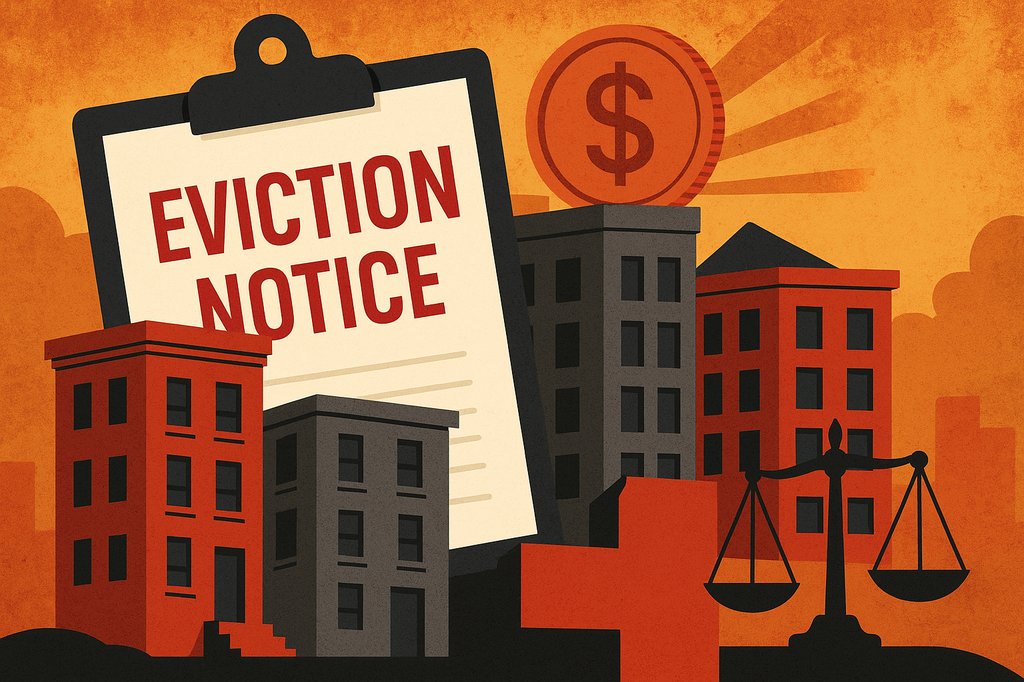Office Conversions: A Multifamily Housing Solution That Never Happened

“Dark windows. Quiet lobbies. Hushed halls.” These opening lines of a New York Times article from April 2021 describe once-thriving offices in downtown New York. At the start of the pandemic, offices nationwide shuttered and we entered the era of remote work. The article suggests residential housing could come from commercial office conversions. Ideally, such office conversions would help solve the affordable housing crisis and put those “dark, quiet, hushed” buildings to good use.
It sounds like a smart plan, but it hasn’t happened, at least not on a meaningful scale. And it doesn’t look like office conversions to affordable housing are in many developers’ plans. The conversion solution is creative, but it just doesn’t work. This article looks at why commercial buildings aren’t going to solve the housing crisis and what is happening to unused offices spaces instead.
We’ll also show you some housing solutions that actually work (and are happening now).
Office conversions: niche markets for luxury housing
According to a July 2022 CommercialEdge report, “Conversions of office buildings to apartments … have proven to be difficult because most such projects are not profitable.”
The report continues, “Some developers work around this by placing amenities in the center of a building, but this is likely a solution only for luxury apartments.”
This analysis reveals the two central issues with offices conversions. The first is how difficult it is for property management companies to make a profit. The second is the likelihood that converted office buildings will primarily cater to wealthier renters. As a result of these two issues, property developers tend to look for the easiest win. They find it in densely populated cities with thriving downtown districts. That’s where their projects command the highest market rates and see the best returns. Prime commercial real estate is highly profitable, and current residential conversions are making the most out of the opportunity. Manhattan’s iconic One Wall Street building, with more than 1 million square feet of office space, is being converted into 566 luxury condos. In Salt Lake City, Hines a 24-story building is set to be converted into a 255-unit luxury multifamily residence.
Conversions are difficult, sometimes impossible
High ceilings, deep floor plates, unworkable layouts, electrical/plumbing issues and more all make it difficult to convert commercial buildings into residential housing. According to the CommercialEdge report, “Office conversions that provide much needed workforce housing likely won’t happen on a large scale unless there are deep discounts on distressed properties or until the state and local governments provide substantial incentives.” Currently, there is no indication that government subsidies and/or mandates are on the horizon.
It seems that the dream of converting millions of square feet of unused or underused commercial property is going to remain just that — a fleeting dream inspired by the early days of the pandemic.
What about office-to-industrial conversions?
Commercial Property Executive (CPE) states that it’s not easy or financially viable to convert offices into industry spaces. “Office-to-industrial conversions are pricey endeavors,” says CPE. “For starters, the buildings generally have to be demolished … a project has to be sited in a location that can achieve premium rental rates to make economic sense.”
Jason Tolliver, Cushman & Wakefield’s Americas Logistics & Industrial Investor lead, said industrial conversions are happening where there are “high barriers to supply, most notably in Southern California, in Northern New Jersey — areas where you’re close to the population, you have a voracious tenant appetite for demand, really high replacement cost and no real opportunity to go down to the next exit and develop.”
As with residential housing conversions, it’s difficult for most businesses to profit from such conversions, so the barriers to entry are unusually high.
Affordable housing solutions that work
The need for affordable housing has reached a crisis level. A recent NPR report reveals that 25% of renters pay more than 50% of their income toward housing.
Property managers, owners, investors and certainly renters all know how important it is for people to be able to afford to live where they live. And it’s clear that office conversions aren’t the answer.
So what does work? We’ll approach the answer to that question by looking at the vital roles property management software solutions and PACs play in the industry.
AFFORDABLE HOUSING IS COMPLEX, BUT SOFTWARE MAKES IT EASIER
Affordable housing operators face unique difficulties that few others in the industry face. The amount and complexity of the paperwork to keep up with can be overwhelming. Small mistakes lead to big fines that can break the business. While there are surely many reasons for the housing shortage, the limited interest in the sector from potential owners and operators certainly contributes to the housing shortage. According to the NPR report, only 25% of households that qualify for Section 8 actually get a voucher. More affordable property managers are needed to help address this issue.
If the complexity of the affordable housing industry is scaring anyone away from entering the industry, know this: the latest affordable housing software has been steadily changing everything for property managers. It helps operators automate tasks that once took hours. It eliminates or greatly reduces manual data entry at the leasing and renewal stages. The right tech can even integrate online compliance workflows during the leasing process. Affordable housing managers can even choose to outsource compliance paperwork to their software provider for fast, guaranteed processing.
None of this streamlining and automation was possible until a few years ago. Now, it’s helping make affordable housing a more rewarding and manageable career option. Any way you look at it, cloud-based technologies and simplified workflows are essential to helping resolve the affordable housing crisis.
Dig deeper: The Future Of Affordable Housing & Compliance Software
INDUSTRY PACS ARE ALWAYS ACTIVE
Yardi Breeze partners with numerous property management associations whose experienced leadership work with Congress. Together, they look for answers to the housing crisis, among other issues. Their political action committees (PACs) look for researched, effective and bipartisan approaches on a range of subjects including affordable housing. Check out the PAC work of your preferred association for more information and ways to get involved.








